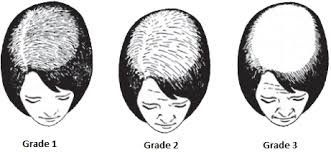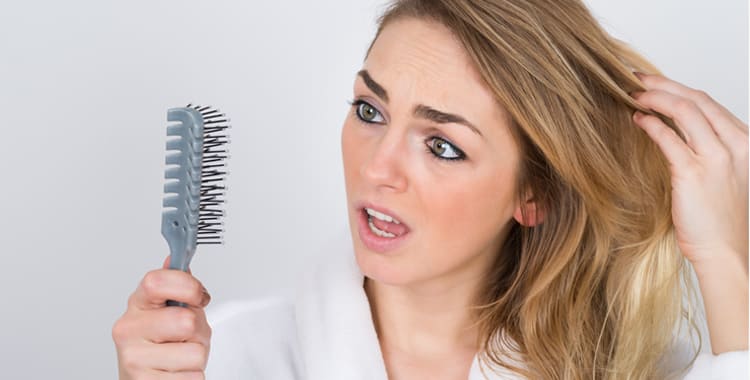Female Pattern Baldness
Introduction
Female pattern baldness, also known as androgenetic alopecia, is a prevalent form of hair loss in women. Unlike men, women with this condition typically experience a diffuse thinning of hair across the crown of the scalp. Influenced by genetic predisposition and hormonal changes, it often becomes more noticeable with age. The psychological impact can be significant, highlighting the importance of seeking professional guidance for diagnosis and potential treatment options. While there is no cure, various interventions, including medications and therapies, can help manage the progression of female pattern baldness.
What is Female Pattern Baldness?
Female pattern baldness, also known as androgenetic alopecia, is a common form of hair loss that affects women. While it shares similarities with male pattern baldness, it typically manifests differently in women. The condition is characterized by a gradual thinning of hair, particularly on the top and crown of the scalp.
Key features of female pattern baldness include:
-
Pattern of Hair Loss :
- Women with androgenetic alopecia usually experience diffuse thinning rather than a receding hairline or bald spots, which is more common in men. The hair thinning often begins at the part line and gradually spreads across the entire scalp.
-
Miniaturization of Hair Follicles :
- Similar to male pattern baldness, female pattern baldness involves the miniaturization of hair follicles. This means that the individual hair strands become finer and shorter over time.
-
Hormonal Influence :
- Hormones play a significant role in female pattern baldness. Elevated levels of androgens, particularly dihydrotestosterone (DHT), can contribute to hair thinning. However, unlike in men, this hormonal influence is more complex in women and not as clearly linked to specific androgens.
-
Genetic Predisposition :
- Genetic factors contribute to the development of female pattern baldness. If there is a family history of hair loss, a woman is more likely to experience similar patterns of thinning.
-
Age-Related Onset :
- Female pattern baldness often becomes more noticeable with age, typically starting in the late 30s or 40s. However, it can occur at any age.
-
Lack of Hairline Recession :
- Unlike men, women with androgenetic alopecia usually maintain their hairline. Instead, the thinning occurs throughout the entire scalp.
-
Psychosocial Impact :
- While male pattern baldness is widely accepted in society, female hair loss can have a greater emotional impact due to societal beauty standards. This may lead to increased psychological distress for affected women.
Types of Female Pattern Baldness
There aren't distinct "types" of female pattern baldness in the same way that male pattern baldness is categorized. Instead, the progression and severity of female pattern baldness can vary among individuals. Here are some common patterns or presentations seen in female pattern baldness:
-
Diffuse Thinning :
- The most common presentation involves an overall thinning of hair without specific bald spots or a receding hairline. Hair loss is spread evenly across the scalp.
-
Frontal Hairline Preservation :
- Unlike male pattern baldness, which often involves a receding hairline, many women with androgenetic alopecia maintain their frontal hairline. Instead, the thinning occurs predominantly on the top and crown of the scalp.
-
Widening of the Part :
- A noticeable sign of female pattern baldness is the widening of the part, with the scalp becoming more visible through the hair. This is often one of the early indicators of the condition.
-
Temporal Thinning :
- Some women may experience thinning in the temples, similar to the pattern seen in men. This can be a less common but still observed manifestation of female pattern baldness.
-
Grade of Severity :
- Female pattern baldness can be categorized by its severity, ranging from mild to advanced stages. In the early stages, there might be minimal thinning, while advanced stages may involve significant hair loss.
Classification of female pattern baldness
Female pattern baldness, or androgenetic alopecia in women, is generally classified using the Ludwig Scale. This classification system is based on the severity and progression of hair loss and helps categorize female pattern baldness into three main stages:

-
Ludwig Stage I :
- This stage represents minimal hair thinning. Women with Ludwig Stage I typically experience diffuse thinning over the top of the scalp, especially around the part line. The overall hair density is reduced, but the hairline is often preserved.
-
Ludwig Stage II :
- Stage II involves a more noticeable decrease in hair volume. Thinning becomes more apparent, and the scalp may become increasingly visible through the hair. While the hairline is still preserved, the thinning extends further into the crown.
-
Ludwig Stage III :
- Stage III is characterized by significant hair loss. The thinning is extensive, and the hairline and crown become more difficult to distinguish. At this stage, the scalp is highly visible, and women may experience a more pronounced decrease in overall hair density.
Hormonal effects on hair fall
Hormones play a crucial role in regulating hair growth and loss. Various hormonal changes can influence the hair growth cycle, leading to conditions like hair loss. Here are some hormonal effects on hair fall:
-
Androgens :
- Androgens, including testosterone and its derivative dihydrotestosterone (DHT), can influence hair growth. In conditions like androgenetic alopecia (both in men and women), hair follicles become sensitive to DHT, leading to miniaturization of hair follicles and eventual hair loss.
-
Estrogen :
- Estrogen is a hormone that generally supports hair growth. During pregnancy, elevated estrogen levels can contribute to thicker and more luxurious hair. However, postpartum, as estrogen levels decrease, some women may experience temporary hair loss known as postpartum telogen effluvium.
-
Thyroid Hormones :
- The thyroid hormones, particularly thyroxine (T4) and triiodothyronine (T3), play a significant role in regulating metabolism. Both hypothyroidism (low thyroid function) and hyperthyroidism (excessive thyroid function) can cause hair loss. Maintaining thyroid hormone levels within the normal range is essential for healthy hair.
-
Insulin and Insulin-like Growth Factor-1 (IGF-1) :
- Insulin and IGF-1 are involved in the regulation of cell growth and metabolism. Conditions associated with insulin resistance, such as polycystic ovary syndrome (PCOS), may lead to elevated androgen levels and subsequent hair loss in women.
-
Progesterone :
- Chronic stress can elevate cortisol levels, which, in turn, can disrupt the normal hair growth cycle. Stress-induced hair loss, known as telogen effluvium, is often reversible once stress levels are reduced.
-
Progesterone :
- Fluctuations in progesterone levels, particularly during the menstrual cycle and menopause, can influence hair growth. Some women may experience increased hair shedding during specific phases of their menstrual cycle.
Causes of Female Pattern Baldness (Androgenetic Alopecia):
-
Genetics :
- Family history plays a significant role. If there's a history of female pattern baldness in the family, a woman is more likely to experience it herself.
-
Hormonal Changes :
- Fluctuations in hormone levels, especially androgens like testosterone and dihydrotestosterone (DHT), can contribute to hair thinning. Conditions like polycystic ovary syndrome (PCOS) may lead to elevated androgen levels.
-
Age :
- Female pattern baldness often becomes more noticeable with age, typically starting in the late 30s or 40s.
-
Menopause :
- Changes in hormone levels during menopause, specifically a decline in estrogen, can contribute to hair loss.
-
Medical Conditions :
- Certain medical conditions, such as thyroid disorders or autoimmune diseases, can contribute to hair thinning.
-
Medications :
- Some medications, including certain birth control pills, anticoagulants, and medications for hypertension, may have hair loss as a side effect.
Signs and Symptoms of Female Pattern Baldness :
-
Gradual Thinning :
- The most common sign is a gradual thinning of hair, especially on the top and crown of the scalp.
-
Widening Part Line :
- The part line may widen as hair becomes sparse, making the scalp more visible.
-
Preserved Hairline :
- Unlike male pattern baldness, women usually maintain their hairline, and the hair loss is more diffuse.
-
Increased Hair Shedding :
- Women may notice more hair shedding than usual during activities such as brushing, washing, or styling.
-
Reduced Hair Density :
- Overall reduction in hair density, making the scalp more visible.
-
Psychological Impact :
- Emotional distress or a decrease in self-esteem may occur due to changes in physical appearance, highlighting the psychological impact of female pattern baldness.
Treatment options of Female patteren baldness
Treatment options for female pattern baldness (androgenetic alopecia) aim to slow down hair loss, promote hair regrowth, and manage the psychological impact of thinning hair. The effectiveness of treatments can vary among individuals, and it's advisable to consult with a healthcare professional or dermatologist to determine the most suitable approach. Here are some common treatment options:
-
Topical Minoxidil :
- Minoxidil is an over-the-counter topical medication that can be applied directly to the scalp. It is the only FDA-approved non-prescription treatment for female pattern baldness. Minoxidil promotes hair regrowth and can slow down the progression of hair loss. It's available in various strengths.
-
Prescription Medications :
- Some prescription medications, such as spironolactone, may be recommended to address hormonal factors contributing to hair loss. Spironolactone is an anti-androgen medication that can help reduce the effects of androgens on the hair follicles. However, it's important to note that these medications may have side effects and should be used under medical supervision.
-
Low-Level Laser Therapy (LLLT) :
- LLLT devices, such as laser combs or caps, use low-level lasers or light-emitting diodes to stimulate hair follicles and promote hair growth. The exact mechanism is not fully understood, but some studies suggest a positive impact on hair density.
-
Platelet-Rich Plasma (PRP) Therapy :
- PRP therapy involves extracting a small amount of the patient's blood, processing it to concentrate platelets, and then injecting the PRP into the scalp. This is believed to stimulate hair follicles and promote hair regrowth.
-
Hormone Replacement Therapy (HRT) :
- For postmenopausal women with hormone-related hair loss, hormone replacement therapy (HRT) may be considered to rebalance estrogen and progesterone levels. However, the decision to undergo HRT should be made carefully, considering potential risks and benefits.
-
Growth Factor Concentrate (GFC) :
- GFC is more helpful in controlling hair fall and maintaining existing hair well. GFC therapy involves drawing a small amount of the patient’s blood, processing it to concentrate the growth factor, and then injecting the GFC into scalp. Taking GFC one complete course of 3 months can show consider improvement in hair thickness and quality.
-
Hair Transplant Surgery :
- In cases of advanced female pattern baldness, hair transplant surgery may be an option. This involves taking hair follicles from areas of the scalp with good hair growth (usually the back or sides) and transplanting them to areas of thinning or baldness.
-
Lifestyle Modifications :
- Adopting a healthy lifestyle can contribute to overall well-being and may have a positive impact on hair health. This includes maintaining a balanced diet, managing stress, and avoiding harsh styling practices.
- It's crucial to note that individual responses to treatments can vary, and not all options are suitable for everyone. The choice of treatment should be personalized based on the specific factors contributing to female pattern baldness in each individual. Regular follow-ups with a healthcare professional are important to monitor progress and adjust treatment plans as needed.
Conclusion
In conclusion, female pattern baldness is a common condition characterized by the gradual thinning of hair, primarily in a diffuse pattern across the scalp. Hormonal fluctuations, genetics, and age play significant roles in its development. Early detection and proactive management strategies, such as topical treatments or medical interventions, can help mitigate its impact on affected individuals.




